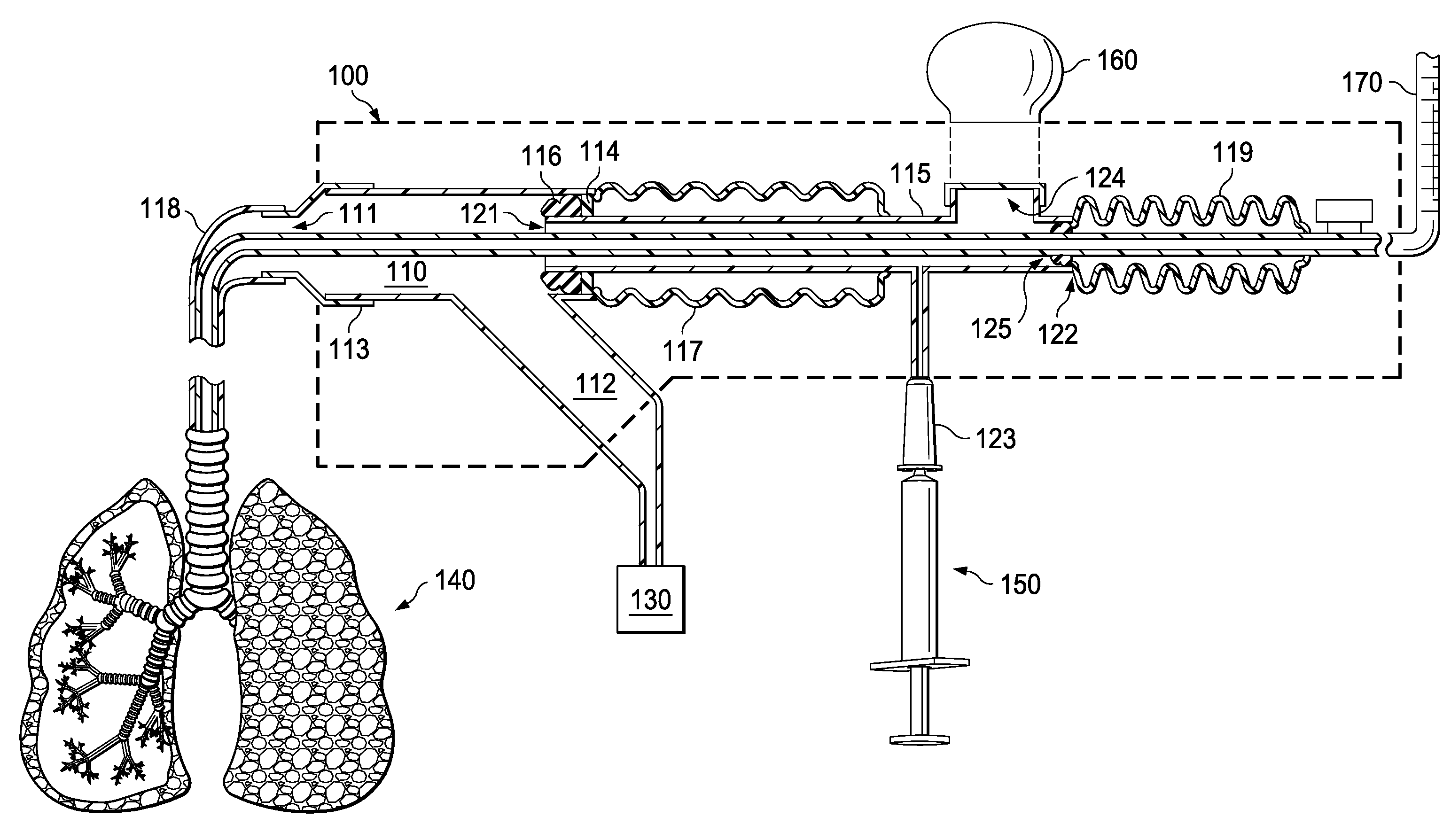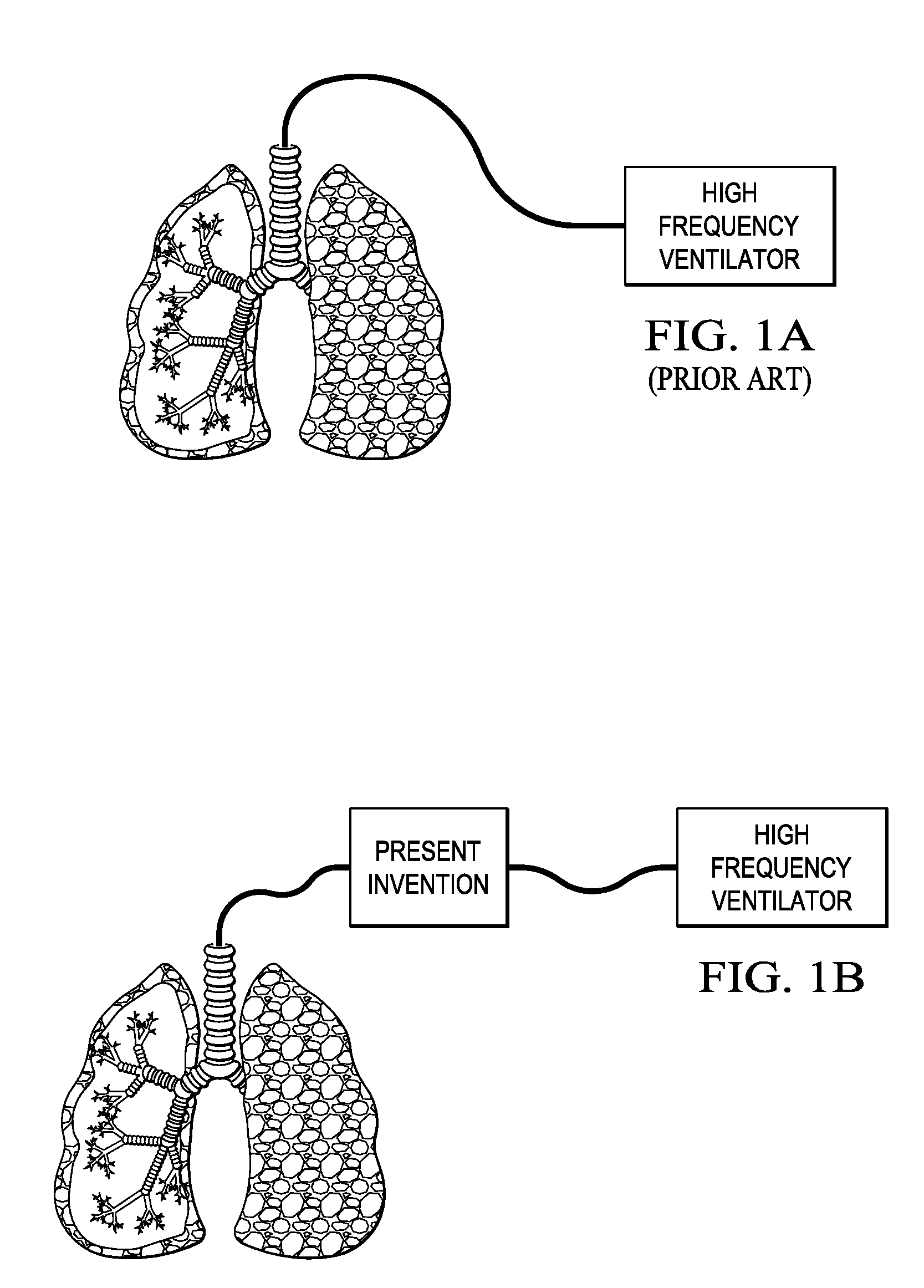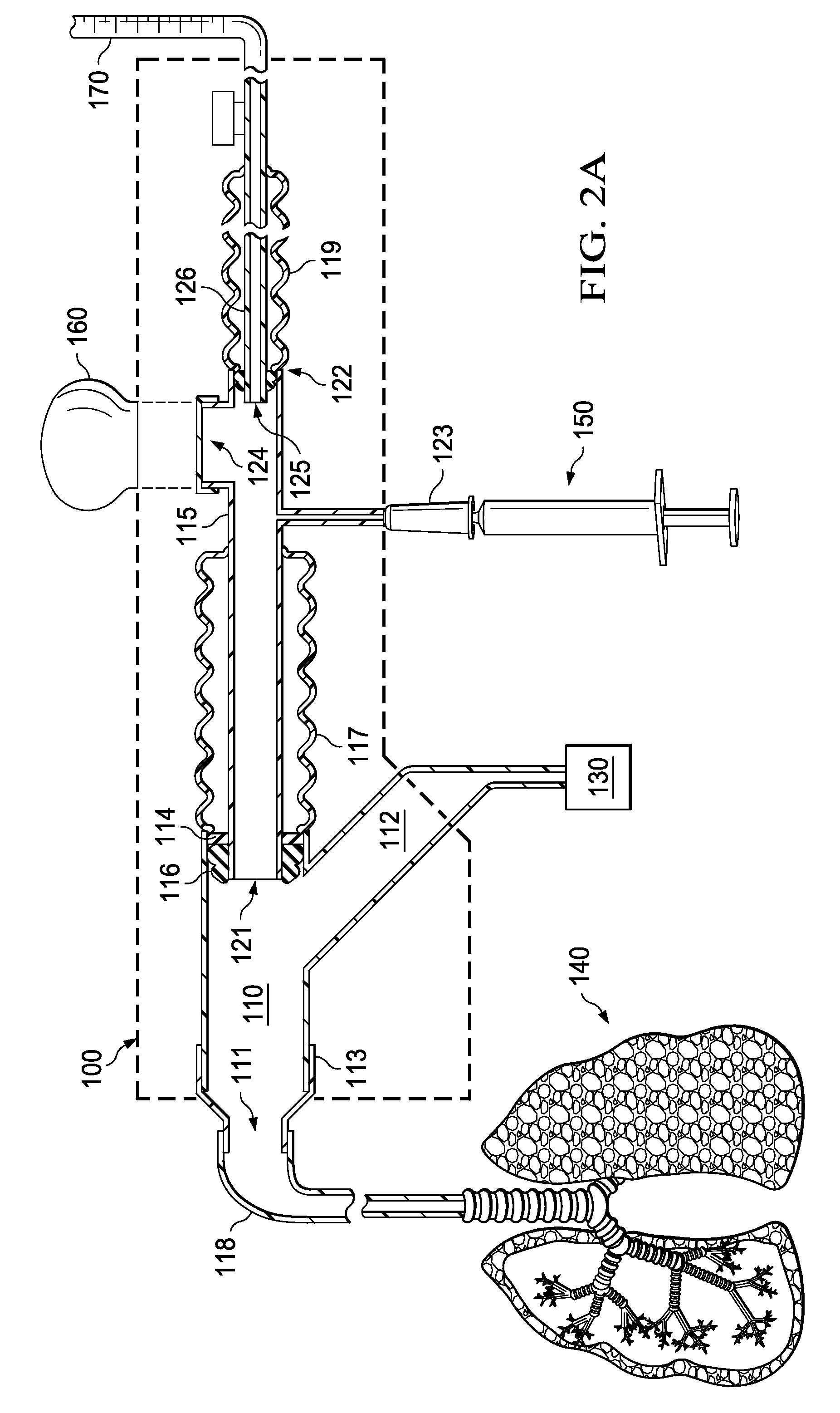Device for secretion removal, manual ventilation and determination of in vivo lung mechanics without circuit disconnection
a technology of in vivo lung mechanics and in vivo secretion removal, which is applied in the field of medical devices, can solve the problems of no real-time in vivo monitoring methods or devices, lag time of tests averaging 30 minutes to 2 hours post-treatment, and patient coughing
- Summary
- Abstract
- Description
- Claims
- Application Information
AI Technical Summary
Problems solved by technology
Method used
Image
Examples
third embodiment
[0044]Referring now to FIGS. 4A-4D, illustrated are sectional views of a pulmonary mechanics measuring device 400 comprising a rotating valve assembly. The compliance measuring device 400 comprises a valve assembly 410 used to control communication with the standard endotracheal tube 118. The valve assembly 410 comprises at least one circular shaped rigid body 411, a rotatable plate 412 and a solid pin assembly 413. The rotatable plate 412 has a plurality of orifices 421-423 therethrough and rotates around the solid pin assembly 413. The plurality of orifices 421-423 are first, second and third positional ports 421-423, respectively. The first positional port 421 (FIG. 4A) is a ventilation port which enables uninterrupted ventilation to the patient when positioned inline of the in-patient ventilator circuitry (endotracheal tube 118) by means of ventilator 430. The second positional port 422 is a suction port enabling endotracheal suctioning when positioned inline of the in-patient v...
fourth embodiment
[0045]Referring now to FIGS. 5A and 5B, illustrated are sectional views of a pulmonary mechanics measuring device 500 constructed according to the principles of the present invention. The pulmonary mechanics measuring device 500 comprises a rigid body chamber 510, a ventilation port 504, an ETT port 511, and a hinged valve assembly 520. In this embodiment, the valve assembly 520 is hinged at a point 521 so that the valve will rotate into an obstructed position as shown in FIG. 5B thereby occluding ventilation by the HFV (not shown). A flexible sleeve 522 envelops the valve assembly 520. Ventilation port 504 couples to the HFV (not shown) and provides ventilation when not obstructed by the hinged valve 520. The patient's endotracheal tube 118 is coupled at ETT port 511. Port 526 may be used for measuring pressure as described above. Port 506 may also be fluidly coupled to port 526 or simply in addition to port 526 to provide a means for instilling a known volume of gas as described a...
fifth embodiment
[0046]Referring now to FIGS. 6A and 6B, illustrated are sectional views of a pulmonary mechanics measuring device 600 and elevation views of a gate valve constructed according to the principles of the present invention. The pulmonary mechanics measuring device 600 comprises a rigid body chamber 610, a ventilation port 604, an ETT port 611, and a gate valve assembly 620. The gate valve 620 may be either manual or solenoid operated. Ventilation port 604 couples to the HFV (not shown) and provides ventilation when not obstructed by the gate valve 620. The patient's endotracheal tube 118 is coupled at ETT port 611. When gate valve 620 is closed, port 626 may be used for measuring pressure as described above. Port 606 may also be fluidly coupled to port 626 or simply in addition to port 626 to provide a means for instilling a known volume of gas as described above. The rigid body chamber 610 may be shaped so as to provide port 625 with a more direct access for insertion of a flexible cat...
PUM
| Property | Measurement | Unit |
|---|---|---|
| volume | aaaaa | aaaaa |
| volume | aaaaa | aaaaa |
| tidal volumes | aaaaa | aaaaa |
Abstract
Description
Claims
Application Information
 Login to View More
Login to View More - R&D
- Intellectual Property
- Life Sciences
- Materials
- Tech Scout
- Unparalleled Data Quality
- Higher Quality Content
- 60% Fewer Hallucinations
Browse by: Latest US Patents, China's latest patents, Technical Efficacy Thesaurus, Application Domain, Technology Topic, Popular Technical Reports.
© 2025 PatSnap. All rights reserved.Legal|Privacy policy|Modern Slavery Act Transparency Statement|Sitemap|About US| Contact US: help@patsnap.com



